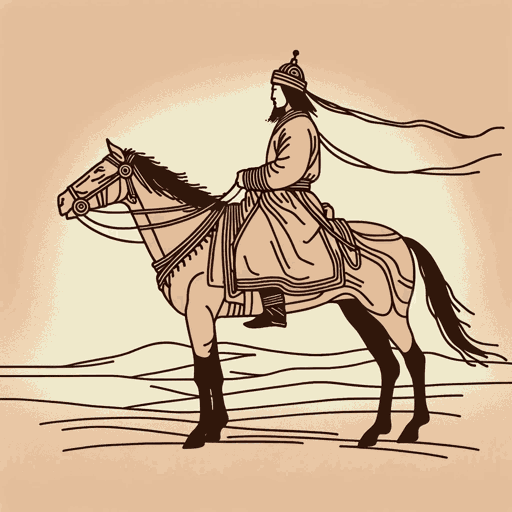43 pages • 1 hour read
Jack WeatherfordGenghis Khan and the Making of the Modern World
Nonfiction | Book | Adult | Published in 2004A modern alternative to SparkNotes and CliffsNotes, SuperSummary offers high-quality Study Guides with detailed chapter summaries and analysis of major themes, characters, and more.
Introduction: “The Missing Conqueror”Chapter Summaries & Analyses
Introduction
Introduction Summary
In his Introduction, Weatherford announces his intention to debunk common misconceptions of Genghis Khan and his Mongol empire. While modern culture might depict the medieval Mongols as a massive barbarian horde and Genghis as ruthless and bloodthirsty, Weatherford points out that accounts of Genghis and his empire were generally favorable until around the 18th century. These unfavorable depictions are, he suspects, largely the product of stereotypes of, and bias against, Asian peoples. He offers as contrast a range of medieval sources, including the poet Geoffrey Chaucer, that portray Genghis as a wise, just, and humane ruler.
Weatherford explains that the primary “aim” of the Mongol empire, in his estimation, was not military conquest but rather the spread of humanistic goals and ideals. He cites the great cultural projects undertaken by the Mongol empire, such as the institution of a common language, standardized currency, a postal system, and support for religious freedom. The empire served as a conduit for cultural exchange on a scale not seen before or since.
However, Weatherford explains, the technological and cultural advances of the Mongol empire manifested themselves in ways not generally understood (at least in modern terms) to be “advanced”; many of the remnants of Mongol culture are not enduring and were not intended to be: for example, they left no enduring architecture and the empire’s material artifacts would be regarded today as primitive.
Related Titles
By Jack Weatherford


